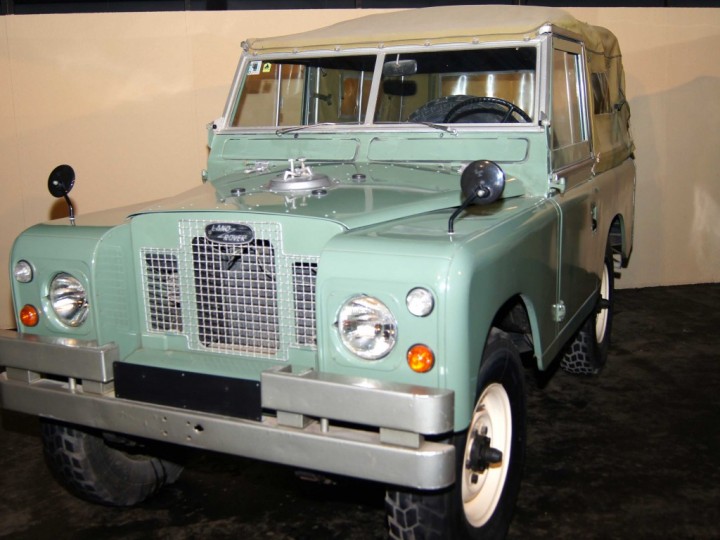1970 Land Rover 109 Series II
en.wikipedia.org
Production : 1961–1971
Predecessor : Land Rover Series II
Successor : Land Rover Series III
Body style : 2-door Off-road vehicle, 4-door Off-road vehicle, 2-door pickup
Engine : 2.25 L I4 diesel , 2.6 L IOE engine I6
Transmission : 4-speed manual
Wheelbase : 88.0 in (2,235 mm) (SWB)
109.0 in (2,769 mm) (LWB)
Length : 142.4 in (3,617 mm) (SWB)
175.0 in (4,445 mm) (LWB)
Width : 66.0 in (1,676 mm)
Height : 77.5 in (1,969 mm) (SWB)
81.0 in (2,057 mm) (LWB)
The SII and the SIIA are very difficult to distinguish. There were some minor cosmetic changes, but the most significant change was under the bonnet in the guise of the new 2.25-litre diesel engine. Body configurations available from the factory ranged from short-wheelbase soft-top to the top-of-the-line five-door station wagon. Also the 2.6-litre straight six petrol engine was introduced for use in the long-wheelbase models in 1967, the larger engine complemented by standard-fit servo-assisted brakes. 811 of these were NADA (or North American Dollar Area) trucks, which were the only long-wheelbase models made for the American and Canadian markets.
From February 1969 (home market), the headlamps moved into the wings on all models, and the sill panels were redesigned to be shallower a few months afterwards.
The Series IIA is considered by many the most hardy Series model constructed. It is also the type of classic Land Rover that features strongly in the general public's perception of the Land Rover, from its many appearances in popular films and television documentaries set in Africa throughout the 1960s, such as Born Free. In February 1968, just a few months after its manufacturer had been subsumed, under government pressure, into the Leyland Motor Corporation, the Land Rover celebrated its twentieth birthday, with total production to date just short of 600,000, of which more than 70% had been exported.[2] Certainly it was whilst the Series IIA was in production that sales of utility Land Rovers reached their peak, in 1969–70, when sales of over 60,000 Land Rovers a year were recorded. (For comparison, the sales of the Defender in recent years have been around the 25,000 level since the 1990s.) As well as record sales, the Land Rover dominated many world markets- in Australia in the 1960s Land Rover held 90% of the 4×4 market. This figure was repeated in many countries in Africa and the Middle East.




